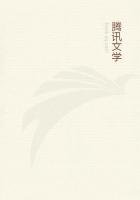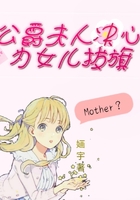There is only one thing that requires further investigation. I do not see the reason that prompts the two insects to leave the greater part of their shell empty in front, instead of occupying it entirely up to the orifice as the Osmia habitually does. As the mother's laying is broken up into intermittent shifts of a couple of eggs apiece, is it necessary that there should be a new home for each shift? Is the half-fluid resin unsuitable for the wide-spanned roofs which would have to be constructed when the diameter of the helical passage exceeded certain limits? Is the gathering of the cement too wearisome a task to leave the Bee any strength for ****** the numerous partitions which she would need if she utilized the spacious final whorl? I find no answer to these questions. I note the fact without interpreting it: when the shell is a large one, the front part, almost the whole of the last whorl, remains an empty vestibule.
To the spring Resin-bee, Anthidium septemdentatum, this less than half occupied lodging presents no drawbacks. A contemporary of the Osmia, often her neighbour under the same stone, the gum-worker builds her nest at the same period as the mud-worker; but there is no fear of mutual encroachments, for the two Bees, working next door to each other, watch their respective properties with a jealous eye. If attempts at usurpation were to be made, the owner of the Snail-shell would know how to enforce her rights as the first occupant.
For the summer Resin-bee, A. bellicosum, the conditions are very different. At the moment when the Osmia is building, she is still in the larval, or at most in the nymphal stage. Her abode, which would not be more absolutely silent if deserted, her shell, with its vast untenanted porch, will not tempt the earlier Resin-bee, who herself wants apartments right at the far end of the spiral, but it might suit the Osmia, who knows how to fill the shell with cells up to the mouth. The last whorl left vacant by the Anthidium is a magnificent lodging which nothing prevents the mason from occupying. The Osmia does seize upon it, in fact, and does so too often for the welfare of the unfortunate late-comer. The final resin lid takes the place, for the Osmia, of the mud stopper with which she cuts off at the back the portion of the spiral too narrow for her labours. Upon this lid she builds her mass of cells in so many storeys, after which she covers the whole with a thick defensive plug. In short, the work is conducted as though the Snail-shell contained nothing.
When July arrives, this doubly-tenanted house becomes the scene of a tragic conflict. Those below, on attaining the ***** state, burst their swaddling-bands, demolish their resin partitions, pass through the gravel barricade and try to release themselves; those above, larvae still or budding pupae, prisoners in their shells until the following spring, completely block the way. To force a passage from the far-end of those catacombs is beyond the strength of the Resin-bee, already weakened by the effort of breaking out of her own nest.
A few of the Osmia's partitions are damaged, a few cocoons receive slight injuries; and then, worn out with vain struggles, the captives abandon hope and perish behind the impregnable wall of earth. And with them perish also certain parasites, even less fit for the prodigious work of clearance: Zonites and Chryses (Chrysis flammea), of whom the first are consumers of provisions and the second of grubs.
This lamentable ending of the Resin-bee, buried alive under the Osmia's walls, is not a rare accident to be passed over in silence or mentioned in a few words; on the contrary, it happens very often; and its frequency suggests this thought: the school which sees in instinct an acquired habit treats the slightest favourable occurrence in the course of animal industry as the starting-point of an improvement which, transmitted by heredity and becoming in time more and more accentuated, at last grows into a settled characteristic common to the whole race. There is, it is true, a total absence of positive proofs in support of this theory; but it is stated with a wealth of hypothesis that leaves a thousand loopholes: 'Granting that...Supposing that...It may be...nothing need prevent us from believing... It is quite possible...' Thus argued the master; and the disciples have not yet hit upon anything better.
'If the sky were to fall,' said Rabelais, 'the larks would all be caught.'
Yes, but the sky stays up; and the larks go on flying.
'If things happened in such and such a way,' says our friend, 'instinct may have undergone variations and modifications.'
Yes, but are you quite sure that things happened as you say?
I banish the word 'if' from my vocabulary. I suppose nothing, I take nothing for granted; I pluck the brutal fact, the only thing that can be trusted; I record it and then ask myself what conclusion rests upon its solid framework. From the fact which I have related we may draw the following inference:
'You say that any modification profitable to the animal is transmitted throughout a series of favoured ones who, better equipped with tools, better endowed with aptitudes, abandon the ancient usages and replace the primitive species, the victim of the struggle for life. You declare that once, in the dim distance of the ages, a Bee found herself by accident in possession of a dead Snail-shell. The safe and peaceful lodging pleased her fancy. On and on went the hereditary liking; and the Snail-shell proved more and more agreeable to the insect's descendants, who began to look for it under the stones, so that later generations, with the aid of habit, ended by adopting it as the ancestral dwelling. Again by accident, the Bee happened upon a drop of resin. It was soft, plastic, well-suited for the partitioning of the Snail-shell; it soon hardened into a solid ceiling. The Bee tried the resinous gum and benefited by it. Her successors also benefited by it, especially after improving it.















